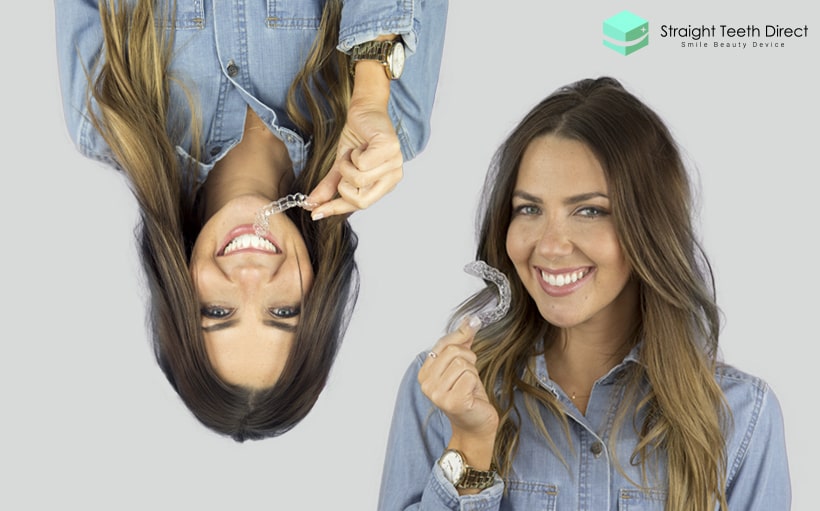
Retainers To Keep Teeth Straight: Fixed or Removable?

You’ve probably heard about retainers and how retention is super important after having braces to keep your new smile looking straight and on point, but do you know the differences between the types of retainers, what can go wrong and which you should consider? Continue reading to get all the information you need for a long lasting smile.
#1 Why you’ll need a retainer
First of all yes you ALWAYS need a retainer.
Teeth move in response to forces and all the time there are constant, multidirectional unhelpful forces trying to make your teeth more crooked. This is why your teeth get worse as you get older if you do nothing. It’s almost like a conspiracy, but it doesn’t have to be this way if you understand what’s going on and how to stop it.
So the main forces are your cheek and jaw muscles, plus your tongue.
Your cheek and jaw muscles when they contract make the outside of your upper teeth arch contract. They try to make your upper jaw more narrow – and more V shaped. The very definition of a V shape is that it is very narrow at the front, so then guess what, something has to give and your upper front teeth start to overlap / cross / stick out. So we know it doesn’t matter if we wear braces for 3 months, 10 months or even 5 years. The teeth NEVER set in position. They are always subject to forces from tongue, jaw and muscles from your mouth.
After nearly 100 years of orthodontics many orthodontic specialists are now acknowledging that the teens they treated who are now adults that have crooked teeth again should have worn their retainers.
In some systems of financial payment Orthodontic specialists were only paid for 1 year of retention, so there was no aftercare after that, which is a reason why many people didn’t get followed up and are now looking into braces alternatives as adults.
This huge issue of relapse means that any competent dentist & Orthodontist insists on the importance of lifetime retention.
So the question is now which retainer is best for you?
#2 So Fixed or Removable Retainers?
There are basically two types of retainer:
Even if you have a fixed retainer you still need a removable retainer as if you had an orthodontic treatment which improved your arch shape and moved your premolars outwards then these have to be held by a removable retainer too. No fixed retainer will maintain them.
What are fixed retainers good for
A fixed retainer is great to hold the front 6 teeth in place BUT when it breaks it can go horribly wrong.
If your orthodontist recommends you fixed retainers, it’s important that you know they need to be maintained.
If it breaks slightly on one tooth then that tooth will go crooked / out of place.
If it debonds slightly then you can get food trapped in it which makes it harder to clean and can cause more dental issues if not looked after.
Either of these scenarios means that if you did need to get your teeth re straightening at some point you would need new braces – as no aligners would fit over the fixed retainer / composite on the back of the teeth.
It’s only a good option if you maintain regular visits to your dentist and hygienist and commit to get it checked and repaired when needed, as we know the mouth is a hostile place and we all like to eat crunchy foods.
Fixed retainers that are set for failure
In the paper Upper bonded retainers – Survival and Failure rates in the Angle Orthodontist Vol 81 No 6, a study on upper bonded (fixed) retainers was published based on 466 patients
It showed shockingly that 58% of upper bonded retainers failed.
This is not a unique study there are many studies showing the failure rate of fixed retainers thus we aren’t simply looking at lifetime retainers, we are also looking at lifetime maintenance of fixed retainers.
With an average cost of €200 for a fixed retainer plus the cost of new braces this is an expensive failure.
The ideal fixed retainers should:
- Be cleansable and flossable
- Not interfere with biting / closing of mouth
- Be thin & low profile so as to attract minimal plaque (not thick and bulky)
- Cover ideally 3-3 (canine to canine) as if only front two/four teeth covered more unwanted relapse occurs
Why removable retainers should always be considered
Removable retainers are great and more hygienic as there is nothing permanently attached to your teeth, but they need to be worn to work.
In fact the original Invisalign® system was designed when one of the founders tried to force fit his old retainer into place after his teeth had moved, and then thought of making a sequence of retainers. The mouth is a hostile place, and at night when we sleep we can exert clenching and grinding forces through our back teeth strong enough to bite through bone – such as a finger, this means that plastic gets a beating, so over time it will flex and loosen, this is why there will need to be a replacement of removable retainer eventually.
BUT usually this involves a new trip to the dentist to take a new impression of your teeth in their current position and then manufacture of a new retainer. This isn’t ideal too as the teeth may have moved slightly so you really wanted a new retainer in exactly the same position as your teeth should be so that they could slightly straighten them if needed. We’ve heard endless stories of people getting discouraged by the time a new appointment involves and cost of having new retainers made. At this stage if you give up you also give up on your teeth being straight as it will only worsen over time.
How often do you need to wear your removable retainers
In most cases you’ll be recommended to wear them pretty much all the time, day and night, for the first 2 to 4 weeks following your teeth straightening treatment, only taking them out to eat and brush your teeth.
After that you’ll be able to wear them at night only for the following 6 months or so and then 3 nights a week.
Keeping them clean will be an essential part of wanting to keep on wearing them, and you’ll notice they will start wearing down after 6/12 months depending if you grind your teeth at night and how you look after them.
#3 Retainers Subscription : never pay for braces again
So now you have no doubt that you’ll need a retainer and a removable retainer for sure, and you also understand that you’ll need new ones over time.
What about a set it and forget it system where new retainers get sent to you on subscription to protect your investment and give you hassle free peace of mind. This is exactly what we offer as part of the Straight Teeth Direct™ Maintainer Plan.
For 150€/£139 a year you extend your guarantee and receive a fresh set of removable retainers every 6 months.
The beauty here is that there can’t be catastrophic failure like with fixed retainers and if there is any relapse your retainer or replacement aligners will soon fix it. This gives you the peace of mind and hassle free solution to keep your teeth straight and your smile radiant.

Not quite sure yet?
Fill in your email and we'll send you more details!















